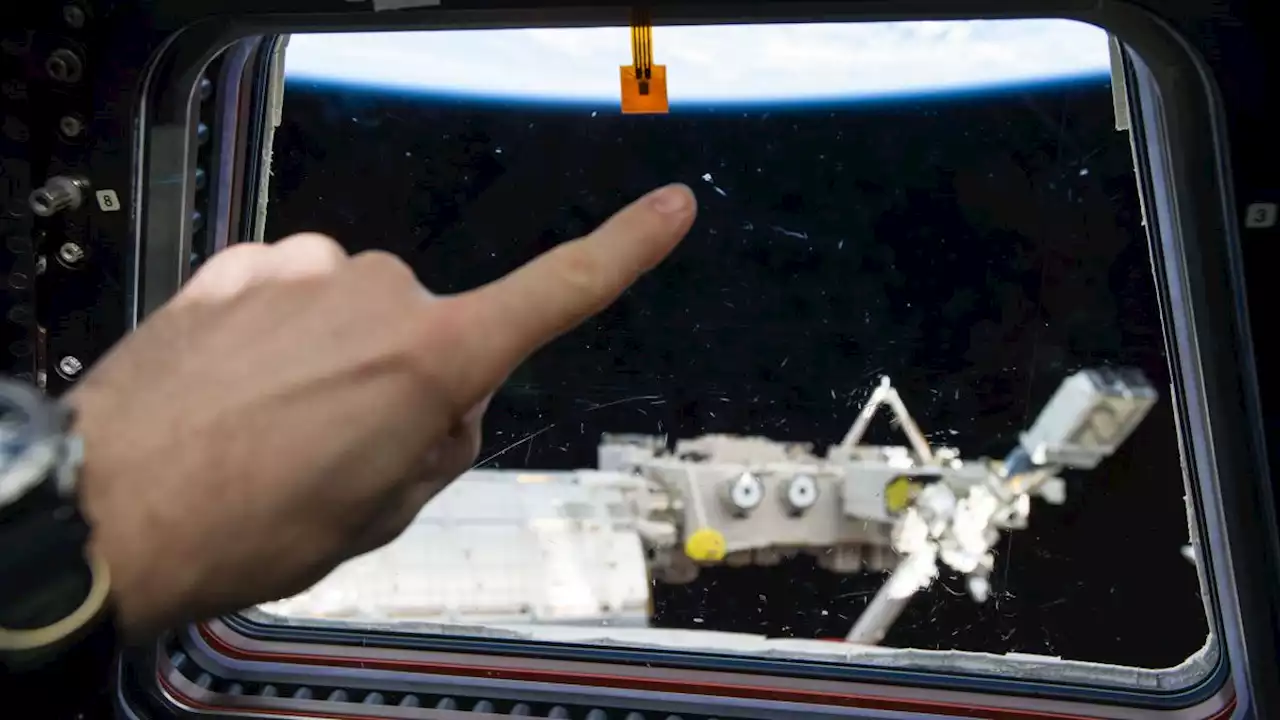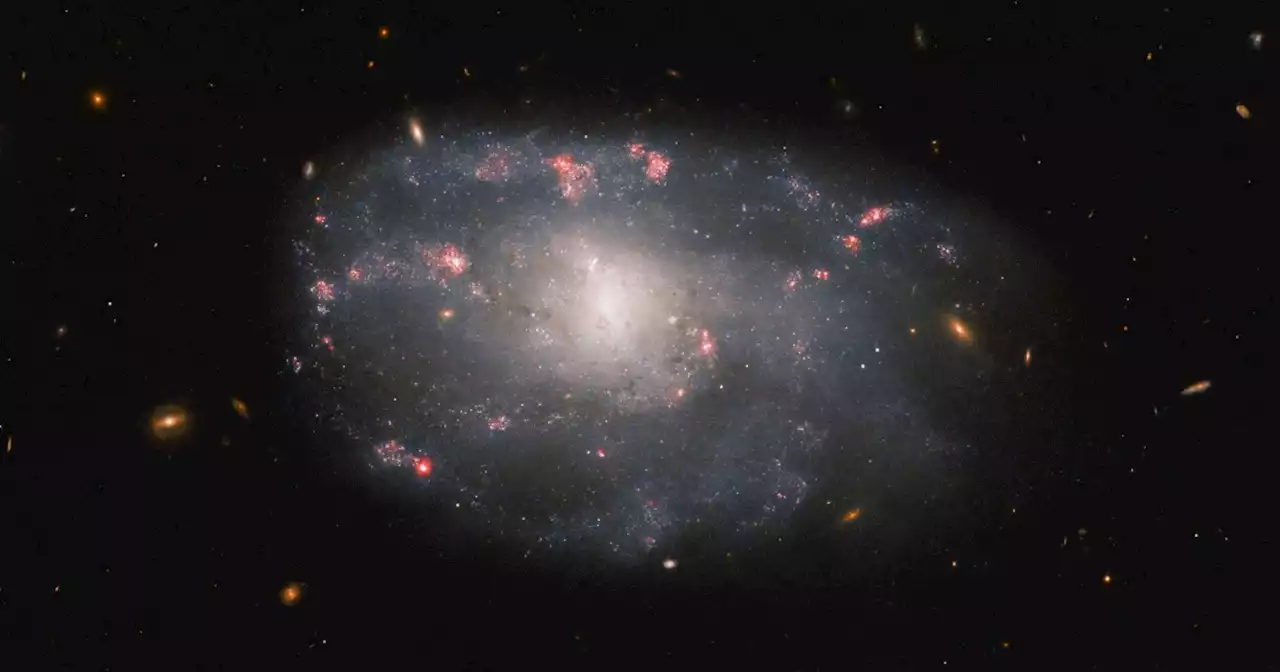The Hubble Space Telescope may be rendered useless by the ever-increasing amount of satellites.
. “Satellite streaks do not currently pose a significant threat to Hubble’s science efficiency and data analysis.”The Hubble Space Telescope was launched in 1990 and has revolutionized humanity’s understanding of the cosmos as well as delivering iconic images such as theIn the 33 intervening years, thousands of satellites have been launched into orbit and most of them live 10 miles above Hubble; with the telescope residing roughly 335 miles above Earth’s surface.
They found that from 2009 to 2020, satellite streaks affected 3.7 percent of Hubble’s images. But in 2021, that number jumped to 5.9 percent — an increase that corresponds with the rise of Starlink.
United States Latest News, United States Headlines
Similar News:You can also read news stories similar to this one that we have collected from other news sources.
 Breathtaking Early Stages of Star Formation Captured With James Webb Space TelescopeWebb space telescope’s mid-infrared capabilities allowed scientists to see past gas and dust clouds to observe previously obscured details in faraway galaxies. A team of researchers has been able to see inside faraway spiral galaxies for the first time to study how they formed and how they change
Breathtaking Early Stages of Star Formation Captured With James Webb Space TelescopeWebb space telescope’s mid-infrared capabilities allowed scientists to see past gas and dust clouds to observe previously obscured details in faraway galaxies. A team of researchers has been able to see inside faraway spiral galaxies for the first time to study how they formed and how they change
Read more »
 This Week In Space podcast: Episode 51 —Bill Nye the Science Guy talks space!Many of us grew up with Bill Nye the Science Guy. Today, The Planetary Society CEO is keeping us on track in space! ⬇️
This Week In Space podcast: Episode 51 —Bill Nye the Science Guy talks space!Many of us grew up with Bill Nye the Science Guy. Today, The Planetary Society CEO is keeping us on track in space! ⬇️
Read more »
 How often does the International Space Station have to dodge space debris?Astronauts have to deal with growing amounts of space junk in orbit, but there are procedures on the International Space Station in case of trouble.
How often does the International Space Station have to dodge space debris?Astronauts have to deal with growing amounts of space junk in orbit, but there are procedures on the International Space Station in case of trouble.
Read more »
 Hubble captures an irregular galaxy which hosted a supernova | Digital TrendsThis week's image from the Hubble Space Telescope shows a spiral galaxy called NGC 5486, shot through with wisps of pink where new stars are being born.
Hubble captures an irregular galaxy which hosted a supernova | Digital TrendsThis week's image from the Hubble Space Telescope shows a spiral galaxy called NGC 5486, shot through with wisps of pink where new stars are being born.
Read more »
 James Web Demolishes Hubble's Record of Fitting the Most Galaxies In a Single ImageA new James Webb Space Telescope survey of the universe has already surpassed Hubble's most comprehensive one to date, and it's only in its first stage.
James Web Demolishes Hubble's Record of Fitting the Most Galaxies In a Single ImageA new James Webb Space Telescope survey of the universe has already surpassed Hubble's most comprehensive one to date, and it's only in its first stage.
Read more »
 Frontiers | Pancosmorio (world limit) theory of the sustainability of human migration and settlement in spaceIt seems to be an accepted assumption that human migration into space is inevitable. Humans are a species of Earth. We are connected to Earth through evolution. We are also connected to space; our bodies contain heavy elements generated by fusion in the cores of stars. What does this evolutionary connection of humans to a star and a planet mean for their ability to inhabit space? This paper combines 100 years of research and scientific development of a theory of ecological thermodynamics with classical mechanics theory and analytical models of self-restoring heat engines to explain how the Sun and Earth have evolved into islands of order in the entropy of space. An explanation is provided regarding how naturally occurring conservative force fields engage a diversity of natural resources in semi-reversible cycles that build a high-exergy ecosphere. The science and evidence suggest that the ability to establish a human settlement in space without the self-restoring order, capacity, and organization of Earth will ultimately lead to settlement failure. Supply chains would disappear, market resources would be depleted, advancement in human pursuits would be disrupted, social and governance systems would falter or collapse, human population numbers would decline, genetic diversity in the human genome would be lost, average human individual biomass would decrease, and human knowledge and understanding would be forgotten. What does it mean to have a location in space outside of Earth be “like Earth?” The results of research are presented as a pancosmorio theory of human sustainability that is developed using the scientific philosophy methodology of abductive reasoning. Four analytical models of space ecosphere sustainability and five hypotheses with proposed tests for falsifiability are provided, including a theorem that suggests a limit to human expansion into space. A new quantitative method of human sustainability is developed from theories of network ecology, providing
Frontiers | Pancosmorio (world limit) theory of the sustainability of human migration and settlement in spaceIt seems to be an accepted assumption that human migration into space is inevitable. Humans are a species of Earth. We are connected to Earth through evolution. We are also connected to space; our bodies contain heavy elements generated by fusion in the cores of stars. What does this evolutionary connection of humans to a star and a planet mean for their ability to inhabit space? This paper combines 100 years of research and scientific development of a theory of ecological thermodynamics with classical mechanics theory and analytical models of self-restoring heat engines to explain how the Sun and Earth have evolved into islands of order in the entropy of space. An explanation is provided regarding how naturally occurring conservative force fields engage a diversity of natural resources in semi-reversible cycles that build a high-exergy ecosphere. The science and evidence suggest that the ability to establish a human settlement in space without the self-restoring order, capacity, and organization of Earth will ultimately lead to settlement failure. Supply chains would disappear, market resources would be depleted, advancement in human pursuits would be disrupted, social and governance systems would falter or collapse, human population numbers would decline, genetic diversity in the human genome would be lost, average human individual biomass would decrease, and human knowledge and understanding would be forgotten. What does it mean to have a location in space outside of Earth be “like Earth?” The results of research are presented as a pancosmorio theory of human sustainability that is developed using the scientific philosophy methodology of abductive reasoning. Four analytical models of space ecosphere sustainability and five hypotheses with proposed tests for falsifiability are provided, including a theorem that suggests a limit to human expansion into space. A new quantitative method of human sustainability is developed from theories of network ecology, providing
Read more »
